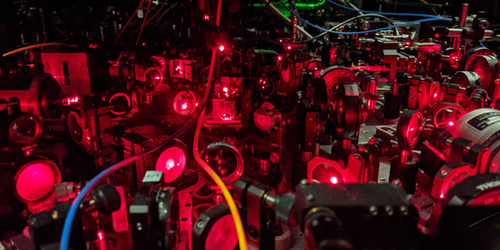A Record Low for Laser-Cooled Molecules
For many years, ultracold atoms have been used in applications ranging from quantum many-body simulators to the world’s most precise clocks. Recently, researchers have begun adapting the techniques used to cool the atoms to instead cool molecules. Now, Jun Ye of the University of Colorado Boulder and colleagues have laser cooled molecules in an optical trap to a temperature of 1 K, 20 times colder than the previous record.
To achieve this low temperature, the team employed multiple cooling techniques. First, they trapped 50,000 yttrium monoxide molecules by combining laser beams and magnetic fields in an approach named magneto-optical trapping, cooling the molecules to 2 mK. Then, they cooled the system to 4 K with a technique known as gray molasses cooling, which involves lowering the kinetic energy of the molecules using an optical field formed by interfering multiple laser beams. Finally, the team transferred 1200 molecules to a 1D optical lattice and dimmed the lasers, which lowers the lattice’s potential wells. This further cooled the molecules to 1 K.
The team showed that molecules trapped inside the lattice behave similarly to atoms, with a comparable lifetime and heating rate. In addition, they found that gray molasses cooling is robust against variations of the experimental parameters inside the optical trap, something they say might open the door for controlling many other molecules. The team is now working to increase the number of trapped molecules inside the final 1D lattice by an order of magnitude, a necessary requirement for quantum simulation and ultracold chemistry applications.
–Sophia Chen
Sophia Chen is a freelance science writer based in Columbus, Ohio.
References
- Y. Wu et al., “High phase-space density of laser-cooled molecules in an optical lattice,” Phys. Rev. Lett. 127, 263201 (2021).




